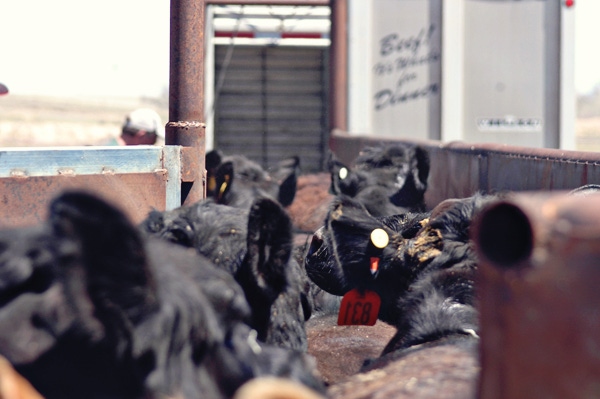Lighter carcass weights continue to dilute the impact of increasing cattle numbers.
September 16, 2017

Except for calf and feeder cattle prices, markets this week mostly continued in a holding pattern.
Steers and heifers traded steady to $6 per cwt higher this week, according to the Agricultural Marketing Service (AMS).
Regionally speaking, prices did the most catching up in the Southeast—$5 to $6 higher from 400 to 700 pounds, according to the National Weekly Feeder and Stocker Cattle Summary from AMS.
Speaking of the Southeast, Blue Grass Stockyards in Lexington, Kentucky hosted a capacity crowd for the grand opening of its new state-of-the-art facility. It replaces the previous, landmark stockyards there—at a different location—which was destroyed by a fire in January of 2016.
“Calf prices will likely decline a bit more to a seasonal low in October, but are expected to remain higher year over year through the fourth quarter,” says Derrell Peel, Extension livestock marketing specialist at Oklahoma State University, in his Cow-Calf Corner market comments. “Strong stocker demand for fall and winter grazing may limit seasonal price pressure this fall. Heavyweight feeder cattle prices typically decline seasonally through the end of the year but are also expected to remain above year-ago levels. While prices may weaken seasonally, I don’t expect a repeat of last year’s October crash in cattle prices.”
Feeder Cattle futures closed an average of $1.78 higher week to week on Friday ($1.30 to $2.50 higher).
Similar to the previous week, the standoff between cattle feeders and beef packers continued through late Friday afternoon. There were a few trades on either side of steady during the week, but there were too few transactions to trend. Prices the previous week were mainly $105 per cwt on a live basis and $165 to $168 in the beef.
Cattle feeders were likely emboldened by thoughts that packers need inventory after last week’s light kill. Stronger futures prices helped, too.
Other than narrowly mixed through the front three contracts, Live Cattle futures closed an average of $1.16 higher week to week on Friday (70¢ to $2.15 higher).
Notions also persist that wholesale beef values are at least near the bottom.
“Boxed beef prices this week were at best steady, as there was no follow through from the marginally higher prices the prior week,” says Andrew P. Griffith, agricultural economist at the University of Tennessee. “It is fairly clear to see at this point that the last official grilling holiday of the summer did little to spur boxed beef prices.”
Choice boxed beef cutout value was 46¢ lower week to week on Friday afternoon at $191.42 per cwt. Select was $4.12 lower at $185.85. The Choice-Select spread was $3.66 higher at $5.57.
Right at 80% of steers and heifers graded Choice and higher in the most recent USDA National Steer and Heifer Estimated Grading percent report (week ending Aug. 25). Of those, about 6% graded Prime and 31.5% were certified in the upper two-thirds of Choice.
In Griffith’s weekly market comments, he points out that softer wholesale prices are also reducing beef prices for consumers.
“Retail beef prices are likely to soften the next two to three months as the market moves through the large quantities of beef and pork,” Griffith says. “If the domestic market is forced to absorb the increased meat production, then lower prices can be expected.”
Although beef production will be higher this year than last (~26.6 billion pounds), analysts with USDA’s Economic Research Service eased their expectations by140 million pounds in the World Agricultural Supply and Demand Estimates (WASDE) released this week (see “WASDE Suggests…” below). That’s compared to the previous month’s estimates.
“One of the driving factors is reduced slaughter weights,” AMS analysts say. “Although total slaughter headcounts have been at or above last year’s numbers, slaughter weights have been declining. The increase in headcount is not enough to offset the lower slaughter weights, leading to a decline in production.”
Outlook
Beef production is expected to be 4.0% to 5.0% more year over year in 2017, according to Peel, with total cattle slaughter 5.0% to 5.5% more than last year.
However, Peel also points to lighter carcass weights as a mitigating factor.
“So far this year, steer and heifer carcass weights have averaged nearly 14 pounds less than last year,” Peel says. “Fed carcass weights typically peak seasonally in October or November. The extent to which carcass weights remain below year-earlier levels will be an important factor in moderating year-over-year increases in beef production in the fourth quarter.”
Brian Williams, livestock economist at Mississippi State University, says that shifting cattle feeding economics point to increasing carcass weights. In the latest In the Cattle Markets, Williams explains positive cattle feeding returns encouraged feeding and marketing more cattle quicker, which equated to lighter carcass weights.
“Now that profits (feedlot) are turning negative, that incentive is gone and feedlots will likely shift toward trying to squeeze as much gain out of each animal as possible,” Williams says. “If that happens, look for the uptick in slaughter weights to shift total beef production higher in the coming months.”
About the Author(s)
You May Also Like





